Distinct subclasses of medium spiny neurons differentially regulate striatal motor behaviors
- PMID: 20682746
- PMCID: PMC2930415
- DOI: 10.1073/pnas.1009874107
Distinct subclasses of medium spiny neurons differentially regulate striatal motor behaviors
Abstract
The direct and indirect pathways of the basal ganglia have been proposed to oppositely regulate locomotion and differentially contribute to pathological behaviors. Analysis of the distinct contributions of each pathway to behavior has been a challenge, however, due to the difficulty of selectively investigating the neurons comprising the two pathways using conventional techniques. Here we present two mouse models in which the function of striatonigral or striatopallidal neurons is selectively disrupted due to cell type-specific deletion of the striatal signaling protein dopamine- and cAMP-regulated phosphoprotein Mr 32kDa (DARPP-32). Using these mice, we found that the loss of DARPP-32 in striatonigral neurons decreased basal and cocaine-induced locomotion and abolished dyskinetic behaviors in response to the Parkinson's disease drug L-DOPA. Conversely, the loss of DARPP-32 in striatopallidal neurons produced a robust increase in locomotor activity and a strongly reduced cataleptic response to the antipsychotic drug haloperidol. These findings provide insight into the selective contributions of the direct and indirect pathways to striatal motor behaviors.
Conflict of interest statement
The authors declare no conflict of interest.
Figures
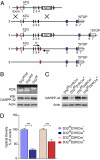
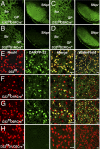

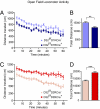
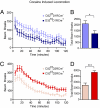
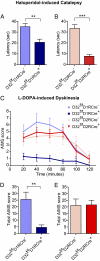
References
-
- Graybiel AM. The basal ganglia: Learning new tricks and loving it. Curr Opin Neurobiol. 2005;15:638–644. - PubMed
-
- Gerfen CR, et al. D1 and D2 dopamine receptor–regulated gene expression of striatonigral and striatopallidal neurons. Science. 1990;250:1429–1432. - PubMed
-
- Albin RL, Young AB, Penney JB. The functional anatomy of basal ganglia disorders. Trends Neurosci. 1989;12:366–375. - PubMed
-
- Gerfen CR. The neostriatal mosaic: Multiple levels of compartmental organization in the basal ganglia. Annu Rev Neurosci. 1992;15:285–320. - PubMed
-
- Miyamoto S, Duncan GE, Marx CE, Lieberman JA. Treatments for schizophrenia: A critical review of pharmacology and mechanisms of action of antipsychotic drugs. Mol Psychiatry. 2005;10:79–104. - PubMed
Publication types
MeSH terms
Substances
Grants and funding
LinkOut - more resources
Full Text Sources
Other Literature Sources
Molecular Biology Databases

